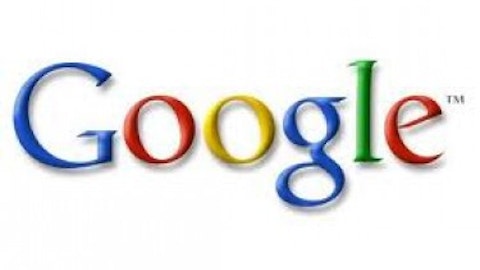Despite its problems, Microsoft Corporation (NASDAQ:MSFT) is still able to recognize consumer trends as they occur. This is good news for 3D printer manufacturers, as the company believes that 3D printing is an important developing technology. Microsoft Corporation (NASDAQ:MSFT) is including a native API for 3D printers in its upcoming “Windows 8.1” update.
What does this mean?
Previously, 3D printing was a bit more involved than using a 2D printer. After creating or downloading a model you would save it, possibly convert it to a new file format, and load it in a new program. This program would send the model data to the 3D printer. All of the printing software was third-party, and sometimes required tweaking to get it working correctly.
The inclusion of a native 3D printing API standardizes the process. Printers by companies such as 3D Systems Corporation (NYSE:DDD) and Stratasys, Ltd. (NASDAQ:SSYS) can now be true plug-and-play devices and print directly from the modeling software. Even the drivers for homemade 3D printers can be standardized through the Windows 8.1 SDK.
Who will benefit?
3D Systems Corporation (NYSE:DDD) and Stratasys, Ltd. (NASDAQ:SSYS) will both likely benefit from this, since it makes their products easier for average consumers to use. They will likely benefit more than Microsoft itself, since the 3D printing market hasn’t matured to the point that native support will heavily influence consumer choices.
3D Systems Corporation (NYSE:DDD) has an agreement with Staples, Inc. (NASDAQ:SPLS) to sell its “Cube” 3D printers both in stores and online at Staples.com. This provides the company with greater consumer-level exposure and allows consumers to see the sleek and colorful 3D printer in person. The new API will strengthen the company’s claims of its printers working “out of the box” as it will ensure driver compatibility with Windows systems moving forward.
As rumored, Stratasys, Ltd. (NASDAQ:SSYS) announced the purchase of MakerBot, creator of one of the most well-known 3D printer brands. As with the Cube, 3D printers by MakerBot will be fully compatible with the new 3D printing API and as a result will be able to provide a more seamless user experience. MakerBot’s “Replicator 2” printers are also slated to be sold at Microsoft Stores, showing Microsoft’s support for 3D printing and giving the devices some much-needed floor time in front of customers who are more likely to be interested in Windows 8.1 support.
Can you take advantage of this?
While native support of 3D printing isn’t likely to drive sales for Microsoft, it may help to further stimulate the 3D printing market.
I’ve previously discussed the opportunities presented by 3D Systems Corporation (NYSE:DDD), Stratasys, and up-and-coming competitor ExOne Co (NASDAQ:XONE). While ExOne Co (NASDAQ:XONE) has the greatest potential for growth among the three companies because of its youth and its focus on the industrial manufacturing sector, it is not likely to benefit from the Windows 8.1 inclusion because it does not focus on the consumer market. 3D Systems Corporation (NYSE:DDD) and Stratasys are both poised to take advantage of it, however, and as both companies continue to make strategic acquisitions it’s hard to say which would be a better investment.
Both companies hold similar valuations in the market and may seem somewhat expensive for their price based on analyst expectations. I hesitate to call them overvalued, however, simply because there is still a significant potential for growth in the 3D printing industry. Microsoft is acknowledging this potential by choosing to incorporate 3D printing into its operating system while the industry is still young. While there is still time to invest in 3D printing during this early growth, that window of opportunity won’t last forever.
Conclusion
The introduction of Windows 8.1 isn’t likely to win over those who absolutely loathe Windows 8, though it does make some much-needed improvements to the operating system. The acceptance of 3D printing as a consumer trend and support within the OS is significant, however. While this alone is not likely to spark a surge in 3D printer purchases, it does set the groundwork for wider acceptance of the printers in the future. Investors who choose this opportunity as an entry point for the 3D printing industry will likely benefit as it brings consumer 3D printing that much closer to mainstream acceptance.
John Casteele owns shares of Microsoft. The Motley Fool recommends 3D Systems and Stratasys. The Motley Fool owns shares of 3D Systems, Microsoft, and Stratasys and has the following options: Short Jan 2014 $36 Calls on 3D Systems and Short Jan 2014 $20 Puts on 3D Systems. John is a member of The Motley Fool Blog Network — entries represent the personal opinion of the blogger and are not formally edited.
The article 3D Printing Takes Another Step Toward the Mainstream originally appeared on Fool.com is written by John Casteele.
Copyright © 1995 – 2013 The Motley Fool, LLC. All rights reserved. The Motley Fool has a disclosure policy.




